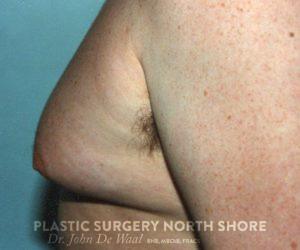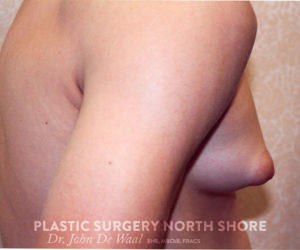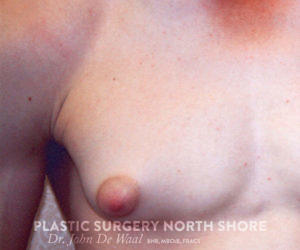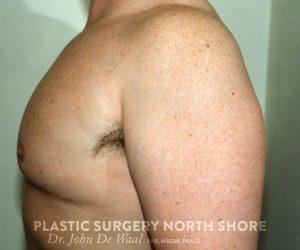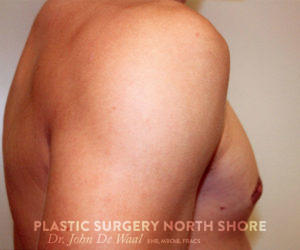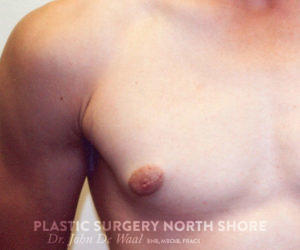Gynaecomastia Surgery (Male Breast Reduction)
Genetics, side effects of medicine, weight gain or in some instances, for no obvious reason at all, some men can develop excess breast tissue. this condition is technically known as gynaecomastia.
Gynaecomastia in males is a lot more common than people may think. Just like women, the male breast is made up of both fat tissue and glandular tissue. Either of these components can enlarge, ranging from a small expansion of the nipple/areola area to fuller enlargement that can resemble a female breast.
Occasionally, the problem can be of medical concern, as men can also be diagnosed with breast cancer. In this instance, particularly if the breast tissue itself is enlarged on one side, we may need to perform a biopsy (a procedure usually covered by medical insurance). However, more often, it is simply the visual appearance of gynaecomastia that can affect men’s confidence and self-esteem.
Gynaecomastia surgery, otherwise known as male breast reduction, is an effective and safe way to reduce the enlarged area and contour it into a more masculine-looking chest and overall flatter appearance.
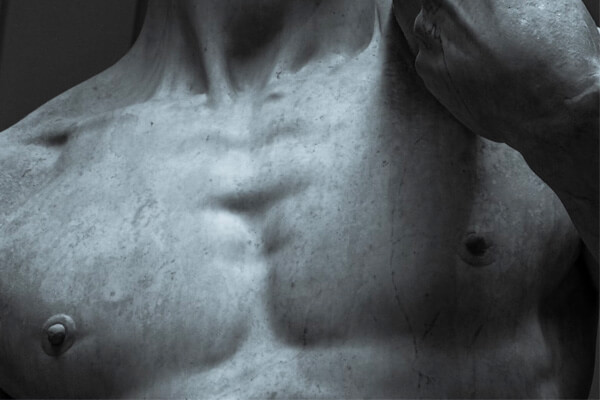
What is gynaecomastia surgery?
Male breast reduction surgery (gynecomastia) helps men to achieve a firmer, flatter-looking chest. We use liposuction and excisions to decrease excess skin and lessen fat deposits in your chest area. We intentionally place excisions to ensure that scars are well hidden when fully healed.
Surgery may include liposuction only, gland removal only, or a combination of both. We determine a treatment plan by assessing by the consistency of your breast tissue (whether it is more firm and glandular or soft and fatty) as well as age.
We can perform simple excisional (cut-out) procedures using local anaesthetic, although some people prefer a general anaesthetic.
Benefits of gynaecomastia surgery
The main benefit of gynaecomastia surgery (male breast reduction) is a flatter, more masculine-looking chest. Our patients often report back to us a renewed sense of confidence, a self-esteem and positivity towards their bodies.
Some other benefits associated with gynaecomastia surgery are:
- Reduced psychological stress around the body and confidence
- A more masculine figure
- More options and a better fit of clothing
- Reduced back pain
- Better posture
Asking questions and understanding the gynaecomastia procedure is an important part of the process, and Dr de Waal will walk through the steps with you before the operation to ensure the desired outcome.
The surgery takes around two hours, and can be performed under both general and local anaesthetic, however with liposuction general anaesthetic is required.
Typically, the male breast reduction surgery is done by liposuction, surgical excision or both, depending on your needs and desired surgical outcome:
Excision
If the tissue to be removed is largely firm glandular tissue then it is often cut out. Excision may be recommended if you have excess skin, fat and tissue. This technique uses larger incisions to remove breast tissue. Sometimes your nipple and areola may need to be repositioned during the procedure.
The cut is made around the flatter area that surrounds the nipple (called the areola). The scar, therefore, sits in the area of skin colour change and is usually well disguised after the scar has healed.
Liposuction
If the tissue is mainly fatty then it can be removed by liposuction. Liposuction involves Dr De Waal making two small incisions on each side of the chest. Excess chest fat is removed, and the chest is resculptured to achieve a more masculine look. The incisions used in this surgical technique are very small, and once settled are usually difficult to identify.
Further reduction
Very occasionally, for very large male breasts, a breast reduction is performed in a similar way as the procedure would be performed on a woman. This procedure produces much more scarring but is used very infrequently.
You can usually return home on the same day as Gynecomastia surgery. Before discharge, you’ll be fitted with a pressure vest that will help to minimise any swelling or bruising while you recover. For the first week after your surgery, you may experience some pain, swelling and general discomfort which can be managed with prescription pain relief, rest and limited movement.
After a week, you’ll notice a decrease in pain and swelling. Most patients are able to return to work and perform light physical activities at this point. A weekly follow-up appointment will also be scheduled with our specialist nurses to ensure your recovery is going well and as expected.
How much time you require off work varies between individuals depending on the nature of the surgery. However, it’s recommended to rest and refrain from usual activities for one or two weeks post-surgery and to not do any heavy lifting or strenuous exercise for several weeks.
The final results from the surgery will be seen after six to nine months.
*recovery times are approximate and dependent on the individual and their procedure.
Implications for any surgery are typically unlikely with proper care. However, like all surgeries, there is always a risk of bleeding, infection and bad reactions to anaesthesia.
As gynaecomastica surgery is a common and relatively safe procedure, usually risks and complications are minimal with proper post-operation care and rest.
Surgery risks:
- Bleeding
- Infections
- Deep vein thrombosis
- Delayed healing,
- Some numbness of the skin.
- Dr de Waal will inform you of any potential complications during your consultation.
Should I expect pain after gynaecomastia surgery?
Local or general anaesthetic is required for surgery, so during and initially, you’ll be pain-free. Once this wears off, you can expect to feel very sore the first few days after gynecomastia surgery, however, this pain will be managed with pain-relief medication.
Dr de Waal will give you detailed recommendations for post-operative care to manage pain and heal as quickly as possible, so you can return to your usual daily routine.

